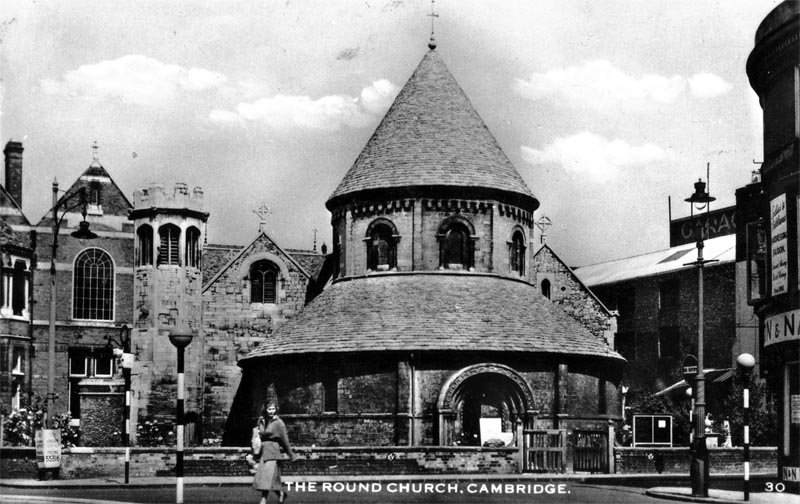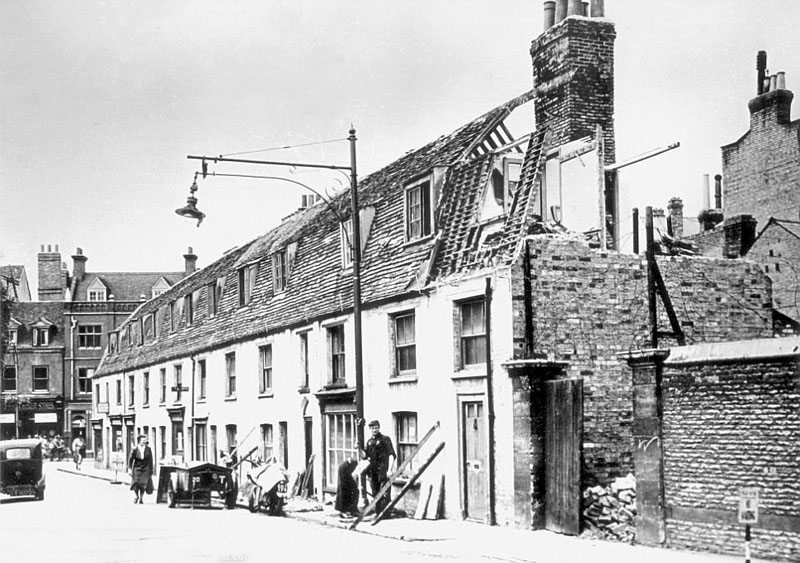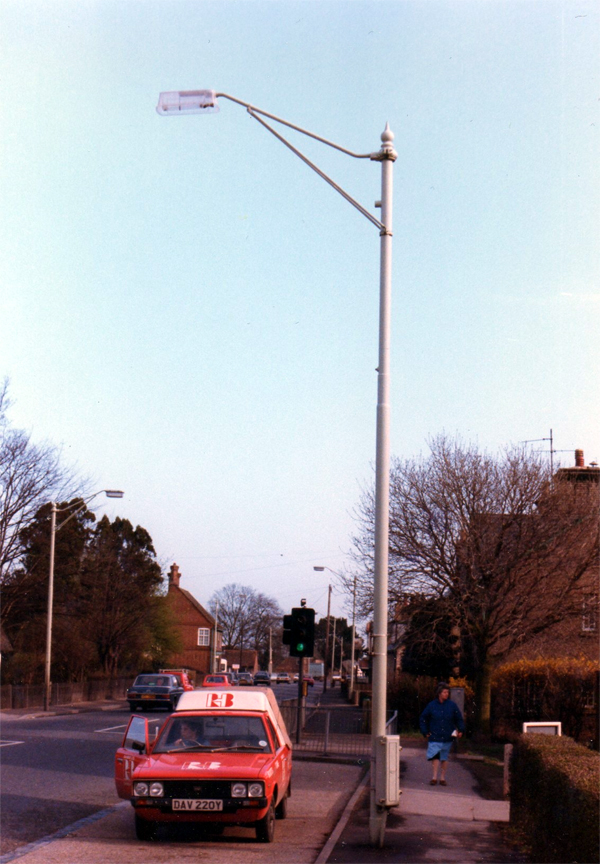
sugg rochester lanterns
"It must date
from c. 1950 as the railings outside the Round Church which appear in
earlier pictures have been removed for the war effort. On the left is a
reasonably clear view of one of the standard Sugg gas lamps which at that
time were used on almost all the main roads. The lantern doesn't have side
reflectors but in other ways it is very typical of them. You can see the
little box for the winding gear, allowing the lantern to be lowered to
street level for maintenance, on the right hand side of the column about 5
or 6 feet from the base. On the right is a post mounted Sugg which I don't
remember in this particular location, but it would have disappeared fairly
early when the first Richardson Candles were installed." - Pete Rivet
"Thanks for posting set of advertisements from the
APLE conference at Folkestone in 1937.
The one for Walter Slingsby & Co of Keighley
illustrates clearly the way that the Cambridge Sugg gas lamps
were maintained. I can remember the lanterns in Silver Street being lowered
to street level but I hadn't made complete sense of how it was done; the
photos shows how the jointed supply pipe worked. It's all very ingenious
and it's a pity no example appears to have survived." - Pete Rivet

sugg rochester lantern
"Here at last is a reasonably good picture of one of the Sugg Rochester lamps which
were characteristic of Cambridge in the early 1950s. The site is in Emmanuel Street. The photo was taken to show the
demolition of the row of houses on the right, to allow road widening - these days they would probably be listed and worth a
small fortune. You can see the control box for the winding gear fairly clearly. The jaunty angle of the lantern was something I
remember on several of them, and was probably a sign that the equipment was wearing out! You may remember that early photos of
these lamps showed column bases which later disappeared, and this puzzled us. I think I can explain why they were taken away.
In Leicester the traction poles carrying overhead wires for the tram wires had ornamental bases too, but most of them were removed c. 1940,
like the railings around parks and houses, as part of the drive for scrap metal to help the war effort. Presumably something similar
happened in Cambridge." - Pete Rivet

open lantern
"I took this around 1980; it shows one of the recycled gas columns,
still with an open sodium lantern though the neighbouring ones have enclosed
ones. Except for the pale green colour it's much as it would have been in
the late 1950s. You can see clearly the openings for the original gas
fittings on the left hand side of the column." - Pete Rivet
The history of these open sodium lanterns in Cambridge is somewhat vague. Many could still
be found on the city’s streets in the 1980s, although they appeared to be randomly placed within the ranks of the
BTH and AEI Ambers. Some were even mounted on modern trefoil brackets near the
Catholic Church; this all suggested
that they were used as casual replacements for the Amber lanterns.
But, archive photographs show that some streets were entirely lit by these lanterns e.g. Histon Road. Therefore,
in these cases, the enclosed Ambers were the replacements. Pete Rivet also recalls that the open lanterns were
the first to be installed and were then shortly replaced by the Ambers.
Many were still being used until the early 1990s when the vast majority were replaced by Thorn Alpha Nines.
One lone example remained on the eastern section of Mill Road until 2002. I hoped to rescue it for the collection,
and also to identify it, but it was mysteriously smashed in-situ and its ragged stump was replaced by a Philips lantern.
|



